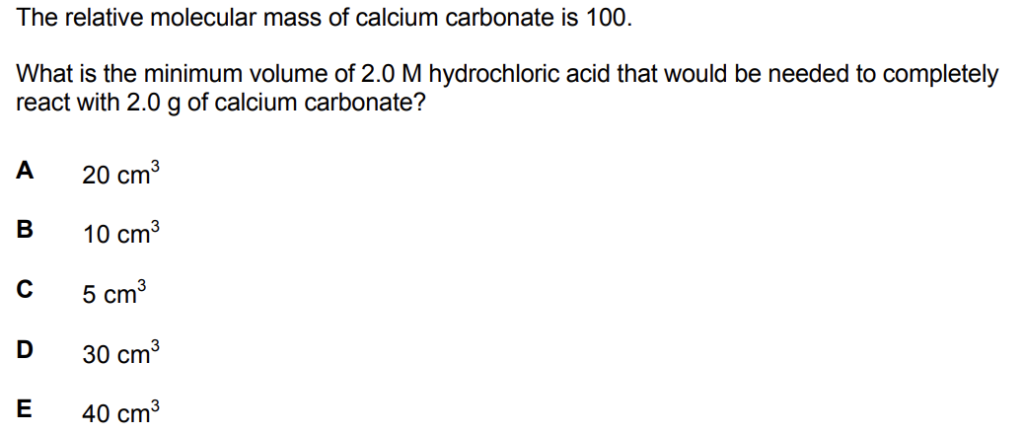

Paris University of Pavia | Ari's Past Student (2020)
28th of April, 2023The International Medical Admissions Test (IMAT) has been a crucial milestone for aspiring medical students from around the globe who seek to join prestigious medical programs in Italy. The examination is a demanding test of knowledge, reasoning skills, and problem-solving abilities across various disciplines, including biology, chemistry, physics, mathematics, and critical thinking. In this comprehensive analysis, we will delve into the 2014 IMAT past paper, providing valuable insights and recommendations for future candidates as they prepare for this challenging exam.
As we explore the 2014 IMAT, it’s essential to recognize that each year’s paper may differ in terms of question distribution, subject focus, and difficulty level. Therefore, our analysis will highlight the unique aspects of the 2014 examination and identify the critical areas where candidates should focus their efforts. By studying past papers, students can identify patterns and trends, enabling them to anticipate potential topics and fine-tune their preparation strategies.
In this analysis, we will take a systematic approach, breaking down each section of the IMAT and examining the various topics and question types that appeared in the 2014 paper. We’ll also share valuable tips and recommendations for tackling these questions effectively and efficiently. Through this comprehensive examination of the 2014 IMAT past paper, we aim to provide candidates with the knowledge and guidance they need to succeed in their medical education journey.
Join us as we dissect the 2014 IMAT, revealing the intricacies and nuances of this crucial examination, and equipping future candidates with the tools and understanding necessary to excel in their pursuit of medical education.
Section 1: Critical Thinking and Problem-Solving
The first section of the IMAT, Critical Thinking and Problem-Solving, is an essential component of the exam, designed to assess a candidate’s ability to analyze, evaluate, and synthesize information from various sources. Medical professionals often face complex situations that require sound judgment and problem-solving skills, making this section a crucial aspect of the examination. In this part of our analysis, we will delve deeper into the question types and subject areas featured in the 2014 IMAT, providing valuable insights into the nature of this critical section.


Critical Thinking
Question types
The critical thinking questions in the 2014 IMAT were designed to gauge the candidate’s ability to dissect complex ideas and arguments, focusing on four primary question types.
Finding Conclusions
Firstly, conclusion extraction questions required candidates to identify the main point or conclusion of the given passage, demonstrating their comprehension and reasoning skills.
Finding Argument Flaws
Secondly, argument flaw questions asked candidates to pinpoint any logical inconsistencies or fallacies in the presented argument, displaying their ability to critically evaluate the strength of an argument.
Identifying Underlying Assumptions
Thirdly, underlying assumption questions assessed candidates’ skills in recognizing unstated premises or assumptions that form the basis of an argument.
Weakening Arguments
Lastly, weakening argument questions required candidates to identify additional information or counterarguments that could weaken the main argument in the passage.
These question types, combined, provide a comprehensive assessment of a candidate’s critical thinking skills in various aspects.
Problem-Solving
Question Types
Numerical Puzzles
The problem-solving questions in the 2014 IMAT focused primarily on numerical puzzles, with some demanding the analysis of large amounts of information. These questions assessed candidates’ quantitative reasoning, data interpretation, and mathematical skills, all of which are essential for medical professionals.


Spatial Puzzles
Spatial puzzles were also present, albeit with moderate difficulty, testing candidates’ spatial reasoning and visualization skills.
These puzzles required candidates to mentally manipulate and analyze geometric shapes or objects in order to arrive at the correct answer. Together, the numerical and spatial puzzles provided a well-rounded evaluation of a candidate’s problem-solving abilities.
General Knowledge
The general knowledge questions in the 2014 IMAT covered a diverse range of topics, showcasing the importance of a well-rounded education for aspiring medical professionals. Questions on authors and scientific books assessed candidates’ knowledge of important works and their contributions to the field of science. Dates of website foundations tested candidates’ awareness of significant online platforms and their origins. Associations of artists with artistic movements required candidates to demonstrate their understanding of various cultural and historical contexts. Finally, questions on organization names evaluated candidates’ familiarity with prominent institutions in the scientific and medical fields. This variety of topics emphasizes the importance of possessing a broad understanding of various disciplines and their interconnectedness.
Strategies for Candidates
To excel in the Critical Thinking and Problem-Solving section of the IMAT, candidates should consider the following recommendations:
- Develop strong analytical skills by practicing complex text analysis, engaging in debates or discussions, and studying common logical fallacies. This will help improve the candidate’s ability to scrutinize logical structures and evaluate the strength of various arguments.
- Improve problem-solving abilities by practicing a wide variety of numerical and spatial puzzles. Focus on improving speed and accuracy while developing strategies for tackling complex problems efficiently.
- Expand general knowledge by reading extensively on various topics related to science, history, and culture. Stay updated on current events and significant developments in various fields to be well-prepared for any general knowledge questions that may appear on the exam.
By following these recommendations and dedicating time to consistent practice, candidates can significantly improve their performance in the Critical Thinking and Problem-Solving section of the IMAT.
Section 2: Biology
The Biology section of the 2014 IMAT, as with other older year papers, featured fewer questions compared to more recent papers. Despite the reduced number of questions, the topics covered still spanned a wide range of biological concepts, ensuring a comprehensive evaluation of candidates’ understanding of fundamental principles in biology. Candidates were expected to have a strong grasp of various topics, ranging from cellular organelles to genetic inheritance, to successfully tackle this section.


Cellular Structures and Functions:
- Rough Endoplasmic Reticulum structures
- Cellular organelle function
- Cellular characteristics
Candidates were required to demonstrate their knowledge of various cellular structures and their functions, including the rough endoplasmic reticulum, and other organelles such as the nucleus, mitochondria, and Golgi apparatus.


Genetics and Inheritance:
- Chromosomal crossing over
- Inheritance of a recessive sex-linked condition
- DNA sequences
- Asexual and sexual reproduction
This topic area focused on genetic principles and inheritance patterns, including the process of genetic recombination during meiosis, sex-linked inheritance, and the differences between asexual and sexual reproduction.
Physiology and Biochemistry:
- Enzyme reaction rate
- Nerve impulses
- Blood glucose levels and relevant organs
- Cardiac valves
- Respiration process
Questions on physiology and biochemistry assessed candidates’ understanding of various physiological processes, such as enzyme activity, nerve impulse transmission, blood glucose regulation, cardiac function, and cellular respiration.
Molecular Biology and Biotechnology:
- Molecules of HIV
- Plasmid and restriction enzymes
This topic required knowledge of molecular biology principles, such as the molecular components of the Human Immunodeficiency Virus (HIV), and the use of plasmids and restriction enzymes in genetic engineering and biotechnology.
| Topic | Number of Questions |
|---|---|
| The chemistry of living things | 2 |
| The cell as a basis of life | 6 |
| Bioenergetics | 1 |
| Reproduction & Inheritance | 2 |
| Inheritance & Environment | 1 |
| Anatomy & Physiology | 3 |
Section 3: Chemistry
The Chemistry section of the 2014 IMAT featured fewer questions compared to more recent papers, following the trend observed in older year papers. Despite the reduced number of questions, the topics covered were diverse and required candidates to have a strong foundation in various chemistry concepts, ranging from electrochemistry to organic conversions and electron configurations.


Electrochemistry:
- Battery positive and negative plates
In this topic, candidates were expected to demonstrate their understanding of electrochemical cells, specifically the roles of positive and negative plates in a battery and the redox reactions occurring within the cell.
Chemical Reactions and Stoichiometry:
- Calculation of reaction yield
- Acids, bases, and amphoteric
Questions in this category tested candidates’ knowledge of reaction stoichiometry and their ability to calculate reaction yield. Additionally, they needed to understand the concepts of acids, bases, and amphoteric substances, as well as their roles in chemical reactions.
Organic Chemistry:
- Conversions of organic molecules
This topic focused on organic chemistry and required candidates to be familiar with various organic reactions and conversions, including functional group interconversions and the mechanisms underlying these transformations.
Atomic Structure and Periodicity:
- Electron configurations
Candidates were required to demonstrate their knowledge of atomic structure and electron configurations, understanding how the arrangement of electrons in various atomic orbitals relates to the periodic table and an element’s chemical properties.
Chemical Equilibria and Acid-Base Chemistry:
- pH calculation
- Permanent molecular dipoles
In this topic area, candidates needed to be proficient in calculating the pH of solutions and understanding the concept of permanent molecular dipoles, including their influence on intermolecular forces and the properties of substances.


| Topic | Number of Chapters |
|---|---|
| The composition of matter | 0 |
| Atomic Structure | 1 |
| The periodic table of the elements | 0 |
| The chemical bond | 1 |
| Fundamentals of inorganic chemistry | 0 |
| Chemical reactions and stoichiometry | 4 |
| Solutions | 0 |
| Oxidation and reduction | 1 |
| Acids and bases | 2 |
| Fundamentals of organic chemistry | 1 |
Mathematics and Physics
The final section of the 2014 IMAT encompasses both Mathematics and Physics questions. While the range of topics covered in this section can vary greatly, it is essential for candidates to have a solid grasp of fundamental concepts in both subjects to succeed in this part of the examination.


Physics
| Topic | Number of Questions |
|---|---|
| Measures | 0 |
| Kinematics | 1 |
| Dynamics | 0 |
| Fluid Mechanics | 0 |
| Thermodynamics | 1 |
| Electrostatic and electrodynamics | 2 |
Thermodynamics
- Galileo thermometer
Questions on this topic required an understanding of the principles behind the Galileo thermometer, including the relationship between temperature, density, and buoyancy, as well as the operational mechanism of the thermometer.
Electricity and Circuits
- Resistor system
In this area, candidates needed to demonstrate their knowledge of resistor systems, specifically how resistors are connected in series and parallel, as well as the rules for calculating equivalent resistance in such systems.
Mechanics
- Acceleration calculation
Questions on this topic focused on the fundamental concept of acceleration, requiring candidates to apply their understanding of kinematic equations and the relationships between displacement, velocity, acceleration, and time.
Magnetism
- Magnet material
This topic tested candidates’ knowledge of magnetism and the various materials that exhibit magnetic properties, including the classification of magnetic materials and their respective characteristics.




Mathematics
Algebra
- Square root equations
- Straight line equations
- Percentage calculations
These topics required candidates to demonstrate their knowledge of various algebraic techniques, including solving square root equations, working with linear equations in slope-intercept form, and performing calculations involving percentages.
Geometry
- Spherical surface areas
In this category, candidates were expected to be familiar with the concepts of solid geometry, specifically the calculation of surface areas for three-dimensional shapes like spheres.
| Topic | Number of Questions |
|---|---|
| Algebra and numerical sets | 2 |
| Functions | 1 |
| Geometry | 1 |
| Probability and statistics | 0 |

